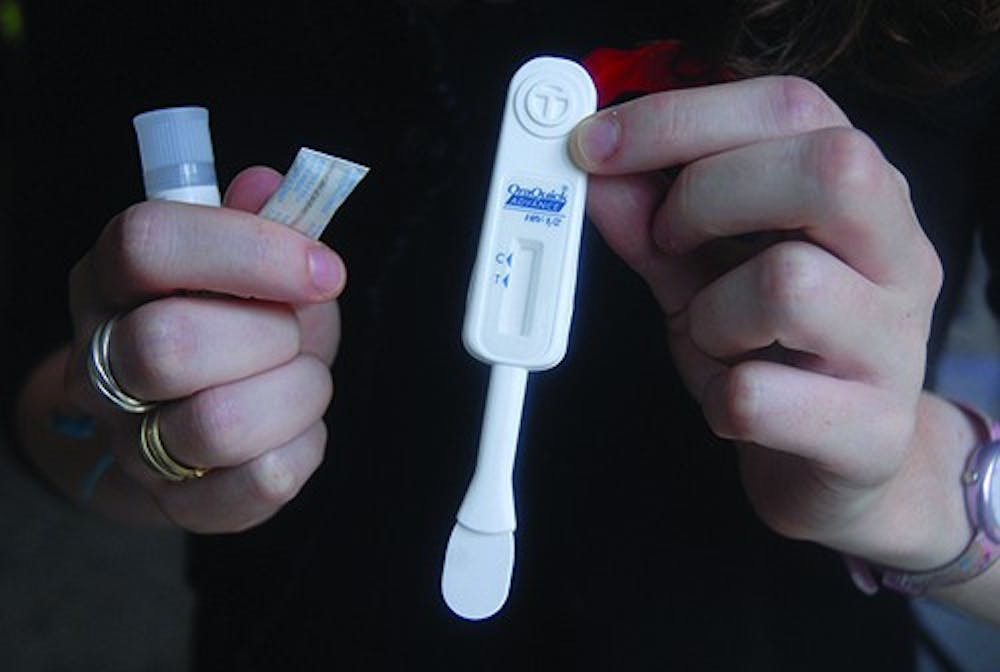I got a rose last Valentine’s Day like so many other women. My rose was not from someone special, though. It was from the clinic where I got tested for chlamydia and gonorrhea, the two most common sexually transmitted diseases, according to Planned Parenthood.
In addition to being the most common diseases, they most often have no symptoms, especially when women are infected. I knew something was wrong with him, but I refused to believe it. The way this guy held doors for me, paid for my coffee and told me to “have a good day, gorgeous” — he was too good. I ended up sleeping with him.
After spending about a week with a brain turned to dreamy mush, I grew suspicious of the guy. He stopped answering my texts. His phone was broken, he would say, when I would catch him on campus and confront him. The stories got more preposterous as time went on. Most notably, he told me he was unable to answer my messages because “His eye was f*cked up, and he had a piece of it fall off.” After this, stories from others started cropping up. “I slept with him once, but I found out he had messed around with one of my friends and when I told him I didn’t want to sleep with him anymore, he got really aggressive.” “He asked me for my phone number.” “He sent me an unsolicited picture of his penis.” “His number’s over 40.”
The stories kept cropping up. The most frightening of all — he had apparently given a girl chlamydia.
I made an appointment at PMI Pregnancy Resource center. The soonest available date was Feb. 14. I thought about the stirrups and metallic jaws I had seen at the doctor’s office. I thought of someone looking inside of my vagina. I thought of AIDS, how everything I knew about it was based on television. How I was not even sure if I had it or not. The door had strings of bells behind it, so I entered with a jingle.
The nurse held up the same chart I had seen since middle school, the one that shows how having multiple sex partners leads to exposing yourself to exponential numbers of bacterium.
It was a pictograph with tiny people on it, the same used for gender designations on restrooms. At the top, there was one person on either side. Below that, there were two people on one side, and four on the other. My eye darted to the bottom of the chart, but it only went up to 10, and the opposing column was black with the tiny icons.
According to itsyoursexlife.com, one out of two sexually active people will get an STD by age 25. Nearly all STDs are treatable, and some are even curable, but the longer you wait to treat the disease, the worse it will be. The nurse gave me a kit that included a tiny tube of clear liquid and a long swab. I went into the bathroom, and slid the swab inside and swirled it around, as I had been instructed. I sealed the swab inside of the airtight tube. On my way out, I got a small bottle of body splash, socks with Hershey kisses embroidered on them and, of course, a single red rose. The test results were negative, but my mind wasn’t at ease. Vaginal cultures are only tested for chlamydia and gonorrhea, the more serious diseases could still be lurking in my blood. The only other time I intended to get my blood drawn, I wanted to give blood to the Red Cross.
I was so nervous to get my finger pricked, that my blood pressure rose to dangerous levels — they could not take my blood. I was babbling away to the phlebotomist about how nervous I was when she drew out three vials of blood.
The blood tests showed I do not have AIDS.
For more information about getting tested for STDs, visit the website for PMI Pregnancy Resource Center on Burd Street at www.pmipregnancycenter.org. You can also get tested and find more information about STDs in Etter Health Center on campus.
Note: Names, including the author’s, have been changed to protect their identities.



The Slate welcomes thoughtful discussion on all of our stories, but please keep comments civil and on-topic. Read our full guidelines here.